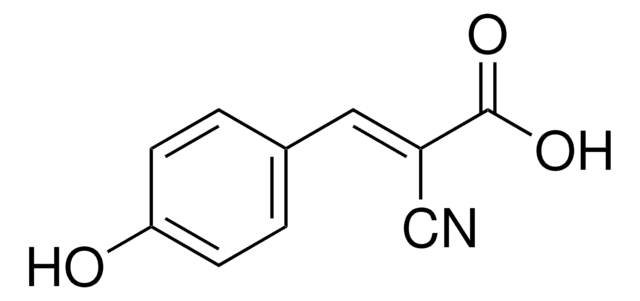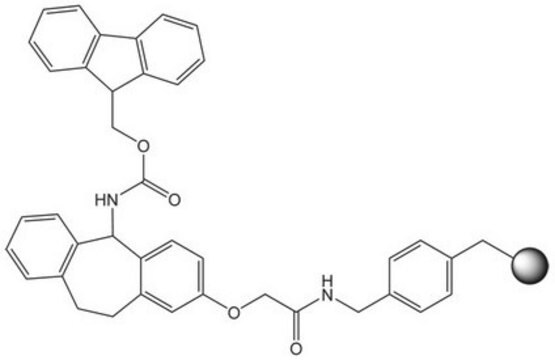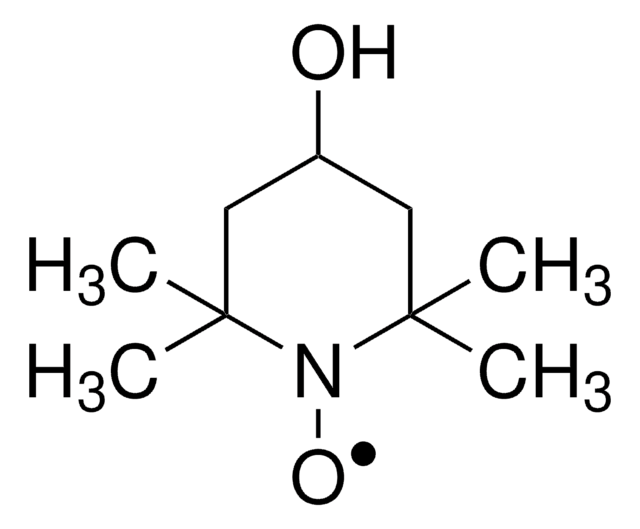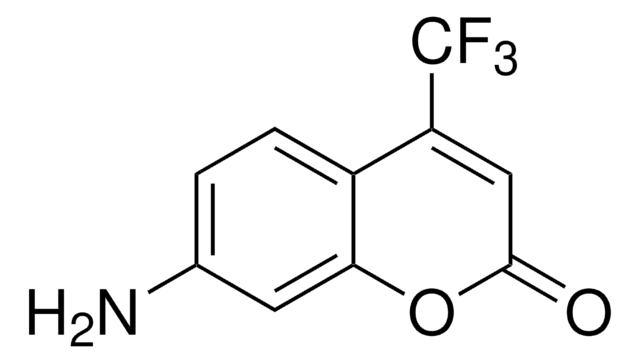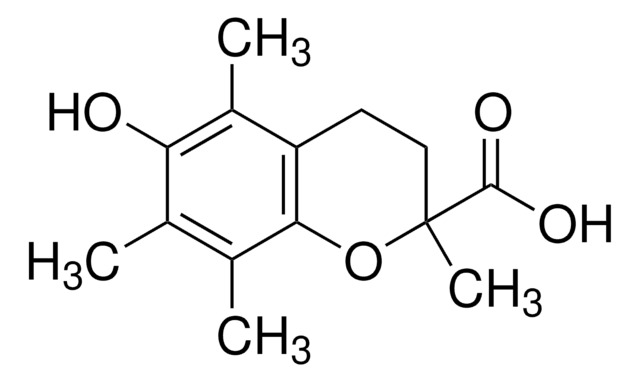추천 제품
생물학적 소스
mouse
Quality Level
결합
unconjugated
항체 형태
purified from hybridoma cell culture
항체 생산 유형
primary antibodies
클론
GRB-232, monoclonal
양식
buffered aqueous solution
분자량
antigen 24 kDa
종 반응성
rat, mouse, human
농도
~2 mg/mL
기술
immunocytochemistry: suitable
immunohistochemistry (formalin-fixed, paraffin-embedded sections): suitable
immunoprecipitation (IP): suitable
indirect ELISA: suitable
microarray: suitable
western blot: 1-2 μg/mL using a whole extract of cultured human acute T-cell leukemia Jurkat cells
동형
IgG3
UniProt 수납 번호
배송 상태
dry ice
저장 온도
−20°C
타겟 번역 후 변형
unmodified
유전자 정보
human ... GRB2(2885)
mouse ... Grb2(14784)
rat ... Grb2(81504)
일반 설명
Grb2 is an adapter protein with one Src homology 2 (SH2) domain and two SH3 domains that facilitate protein-protein interactions. grb2 is highly conserved across species and is critical for development events such as epithelial morphogenesis, cell motility and vasculogenesis. Grb2 is closely associated with Sos and activates Ras and the MAPK cascade. Grb2 interacts with signalling proteins involved in T-cell development, B-cell activation and development and autoimmunity. Recent reports implicates Grb2 role in several oncogenic signalling pathways that lead to CML and breast cancer.
Monoclonal Anti-Grb2 reacts specifically with Grb2 (24 kDa).
Monoclonal Anti-Grb2 reacts specifically with Grb2 (24 kDa).
면역원
synthetic peptide (a.a. 200-217) corresponding to the C-terminal region of human, rat and mouse Grb2.
애플리케이션
Anti-Grb-2 antibody may be used at a working concentration of 1-2 μg/mL for detection by immunoblotting in whole cell extracts of human T cell leukemia, Jurkat cells. Detection is also possible in extracts of murine spermatozoa by immunoblotting at a working dilution of 1:1000. The antibody is suitable for indirect ELISA, immunocytochemistry, immunohistochemistry, immunoprecipitation and protein microarray.
물리적 형태
Solution in 0.01 M phosphate buffered saline, pH 7.4, containing 15 mM sodium azide.
제조 메모
Purified from culture supernatant of hybridoma cells grown in a bioreactor.
면책조항
Unless otherwise stated in our catalog or other company documentation accompanying the product(s), our products are intended for research use only and are not to be used for any other purpose, which includes but is not limited to, unauthorized commercial uses, in vitro diagnostic uses, ex vivo or in vivo therapeutic uses or any type of consumption or application to humans or animals.
적합한 제품을 찾을 수 없으신가요?
당사의 제품 선택기 도구.을(를) 시도해 보세요.
가장 최신 버전 중 하나를 선택하세요:
B S Verbeek et al.
The Journal of pathology, 183(2), 195-203 (1997-12-09)
In 20-30 per cent of human breast cancers, the receptor tyrosine kinases epidermal growth factor receptor (EGFR) and c-erbB2 are overexpressed. This overexpression leads to increased mitogenic signalling and is correlated with poor prognosis. Overexpression of associated adaptor proteins, like
E Sebzda et al.
Annual review of immunology, 17, 829-874 (1999-06-08)
Advances in gene technology have allowed the manipulation of molecular interactions that shape the T cell repertoire. Although recognized as fundamental aspects of T lymphocyte development, only recently have the mechanisms governing positive and negative selection been examined at a
A M Tari et al.
Seminars in oncology, 28(5 Suppl 16), 142-147 (2001-11-14)
The growth factor receptor-bound protein-2 (GRB2) is essential for multiple cellular functions. Inhibition of GRB2 function impairs developmental processes in various organisms and blocks transformation and proliferation of various cell types. GRB2 is most well known for its ability to
Arif Yurdagul et al.
Journal of cell science, 129(8), 1580-1591 (2016-02-26)
Oxidized low-density lipoprotein (oxLDL) accumulates early in atherosclerosis and promotes endothelial nuclear factor κB (NF-κB) activation, proinflammatory gene expression and monocyte adhesion. Like for other atherogenic factors, oxLDL-induced proinflammatory responses requires integrin-dependent focal adhesion kinase (FAK, also known as PTK2)
R J Daly et al.
Oncogene, 9(9), 2723-2727 (1994-09-01)
A receptor blotting technique was used to detect SH2 domain containing epidermal growth factor receptor (EGFR) substrates that exhibited differential expression either between normal breast epithelial cells and breast cancer cells or between different human breast cancer cell lines. This
자사의 과학자팀은 생명 과학, 재료 과학, 화학 합성, 크로마토그래피, 분석 및 기타 많은 영역을 포함한 모든 과학 분야에 경험이 있습니다..
고객지원팀으로 연락바랍니다.